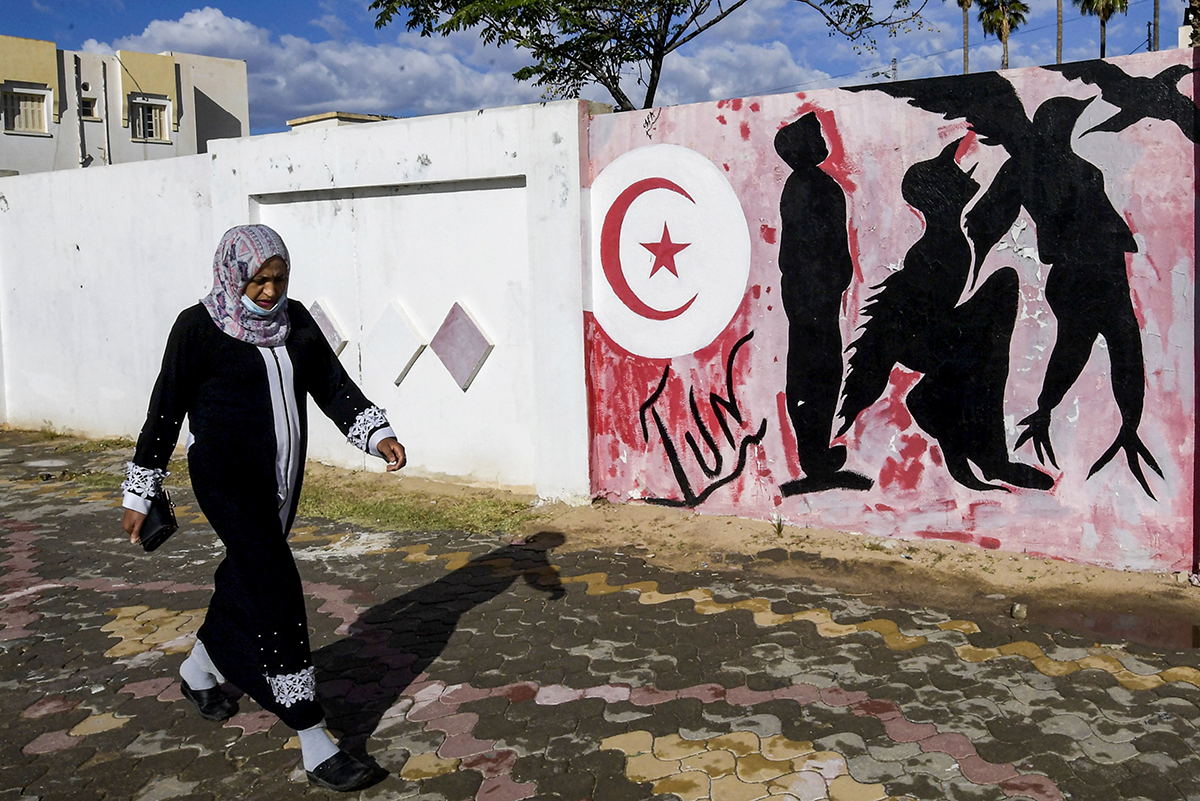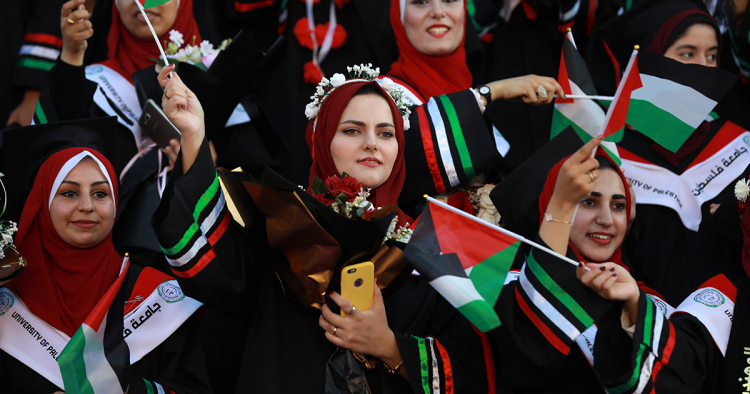This article is part of the publication Thinking MENA Futures, produced in conjunction with MEI's Strategic Foresight Initiative and the MEI Futures Forum. Read the other articles in the series here.
Although foresight on the Middle East and North Africa (MENA) is having a heyday today, this was far from always the case. A survey shows that in the early 2000s, a mere 14 foresight studies on the region came out — more than half of which were undertaken in the United States, and a quarter in Europe. Just two were done by authors from the region itself — both of which focused on environmental issues only.1 The remaining studies looked overwhelmingly at political and security issues: From the prospects for insurgency in Iraq to the Israeli-Palestinian conflict, Middle Eastern foresight remained narrow in focus, origin, or time horizon.
There were quite a few reasons for this: For the outsiders conducting foresight on the region, disruption was the predominant area of concern, reducing the time horizon as much as the scope of exploration. These events — the wars of 1967 and 1973, the Lebanese civil war, the war between Iran and Iraq, the Intifada of 1987, not to mention the 39 successful coups2 that took down governments — not only throttled foresight, they also bolstered the notion that the future is inherently unknowable, and one’s agency over it limited. Within the region, foresight was outshined by the much more popular planning, backed by both Marx’s and Rostow’s then-popular thesis that all states follow the same pattern of development. (More on how planning is different from foresight later.)
With the Arab Spring, a new era in regional foresight began. In the decade since, more than 40 foresight products on the region have been published, with about half of them having 2030 as a horizon, and the other 2050.3 There are broadly two reasons for this.
Firstly, the Arab Spring unveiled a new agent hitherto ignored: Popular movements, rather than governments or military forces, had created change. This meant that anyone wishing to understand what this agent would do next had to understand its characteristics: its demographic and educational composition, its employment status, its values, its grievances, its way to communicate. Trend analysis was (and is) the only tool to do this: The rapid increase of the region’s youth population, flanked by an increase in connectivity, food price dependence, and an imperceptible change in values had all preceded the Arab Spring — but in the absence of trend monitoring, they went unnoticed.

Secondly, the change drove home the point of the possibility of change previously accepted to be impossible. Overnight, the future became a possibility space to be shaped and formed by all agents involved rather than a linear trajectory states were on. In the immediate aftermath of the Arab Spring, this opened the future as a marketplace for competing ideas: From Muslim Brotherhood futures of a state in line with Islamic principles to a somewhat ill-defined democracy, from the Islamic State’s apocalyptic future to a plethora of future visions (Saudi Arabia’s, the UAE’s, Qatar’s Vision 2030, Egypt’s Map of the Future, Kuwait’s New Kuwait 2035), the change of 2011 turned the future into a competition.
But at the same time, it also opened a space for foresight: a methodology exploring trends and playing with ideas to test which futures are possible, desirable, or to be avoided. Quite quickly, a lot of these products fell into a classical foresight trap: endemic pessimism. A large-scale survey funded by the EU found profound regional pessimism about its future. Other pools found that almost half of young Arabs wish to leave their region in the absence of an attractive future.
"But the task of Middle Eastern foresight is not just to warn or, worse, fall into doomsday predictions. It is to point decision-makers to where the priority and possibility for action is — and primarily, action for the better."
While this sounds shocking, it is a normal phenomenon in foresight: Human beings have an ingrained tendency to be pessimistic, even when they live in peaceful and prosperous conditions. Somewhat absurdly, they can be simultaneously optimistic about their personal future while being pessimistic about their country’s.4 In the region’s case, ongoing conflict and turmoil biases the brain in a two ways toward the negative: The status quo bias makes us believe the future will be pretty much like today, and the conjunction fallacy makes us biased toward elements that we have more information on. In other words, the more you know about the negative elements of a certain future, the more our mind focuses on it (which is why visualizations and the Law of Attraction are actually not just quackery). There are three problems with endemic pessimism when looking at the future: Firstly, we become blind to surprise because we zero in on what we know. Secondly, we miss opportunities, possibilities to improve the future. And thirdly, over-pessimism stifles action because it produces the Cassandra effect: Overwhelmingly negative messages leads to ignoring them, a curious human reflex.
But the task of Middle Eastern foresight is not just to warn or, worse, fall into doomsday predictions. It is to point decision-makers to where the priority and possibility for action is — and primarily, action for the better. To improve the effectiveness of foresight on the region, here are a few lessons learned:
- Plans and visions are not foresight. Both are linear, deterministic, state-centric, and normative, whereas the future is none of these. They have their place, but they need to be preceded or flanked by foresight, which can test-drive them into the future, identify obstacles or errors in causal reasoning, unveil assumptions, and set them within the larger strategic context. Strategy is neither foresight, plan, nor vision: It is what will operationalize them.
- Foresight needs to question established beliefs. For instance, a survey conducted by the EU Institute for Security Studies and the Italian Ministry for Foreign Affairs found that more than half of young Arabs felt that life was the outcome of their own action — contradicting conventional notions of fatalism about people in the region. To be better prepared for surprise, one needs to look for it — or look at established ideas in a new way.
- Foresight needs to look at the hidden, rather than the obvious changes: Over the course of a decade, regional awareness moved from half of the population responding “never heard of climate change” to half saying “it is a very serious problem.”5 Values changed, too: From obedience to authority to gender equality or the role of Islam in politics, polls reflect a subtle shift in social norms. The job of foresight is to find these imperceptible changes and monitor them to see toward what they evolve.
- Foresight needs to review itself: 60% of foresight is accurate, a number that can be improved through constant review of past assumptions.6
- Foresight needs to be humble: While it is the only tool available to explore uncertainty, it is far from perfect. The greatest unknown in foresight is always the human being: Both people and decision-makers impact the future the most, but why and when they act is not always easy to know.
- Foresight needs to be done by many: Just as the future generally, foresight belongs to everybody. It should always be conducted in a group which should be as diverse as possible: ages, origins, backgrounds, orientations, and values.
Florence Gaub is the deputy director of the EU Institute for Security Studies, where she is in charge of coordinating research activities.
Photo by Majdi Fathi/NurPhoto
Endnotes
- Mostafa K. Tolba, Najib W. Saab, “Arab Environment: Future Challenges,” Arab Forum for Environment and Development, 2008; Ahmad Sadiddin, “The Foreseen Impact of the Recent Policy Reforms and Other Scenarios on Water Use in Syrian Arab Republic: the Case of Al-Khabour Basin,” Food and Agriculture Organization of the United Nations, 2009. Jerome C. Glenn, “Three alternative Middle East peace scenarios,” in Jerome C. Glenn and Theodore J. Gordon (eds.), “State of the Future,” American Council for the United Nations University, Washington, DC, 2004; Alan Schwartz, “Scenarios for the Insurgency in Iraq,” United States Institute of Peace, 2006.
- Between 1945 and 2015.
- Edgar Göll, “The Future. Foresight Studies on the Middle East and North Africa,” in Eduard Soler (ed.), Re-conceptualizing Orders in the MENA Region: The Analytical Framework of the MENARA Project, Methodology and concept papers No. 1, November 2016, pp.88 – 100. Erika Holmquist and John Rydqvist, “The Future of Regional Security in the Middle East – Four Scenarios,” April 2016.
- Tali Sharot, The Optimism Bias: A Tour of the Irrationally Positive Brain (Vintage: New York, 2011).
- Gallup, “Awareness of Climate Change and Threat Vary by Region,” 2009, https://news.gallup.com/poll/124652/awareness-climate-change-threat-vary-region.aspx. Arab Forum for Environment and Development, “Arab environment: future challenges”, 2008, p.128
- Philip Tetlock, Expert Political Judgment: How Good Is It? How Can We Know? (Princeton University Press: Princeton 2006)
The Middle East Institute (MEI) is an independent, non-partisan, non-for-profit, educational organization. It does not engage in advocacy and its scholars’ opinions are their own. MEI welcomes financial donations, but retains sole editorial control over its work and its publications reflect only the authors’ views. For a listing of MEI donors, please click here.













